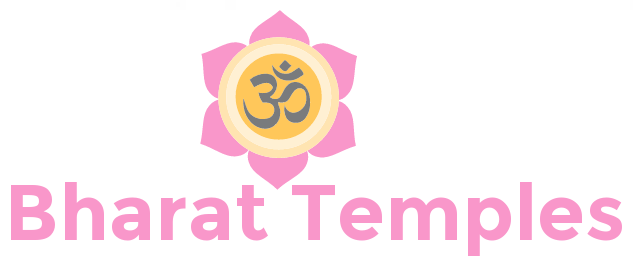Published by The Theosophical Publishing House, Chennai
Om ! May He protect us both together; may He nourish us both together;
May we work conjointly with great energy,
May our study be vigorous and effective;
May we not mutually dispute (or may we not hate any).
Om ! Let there be Peace in me !
Let there be Peace in my environment !
Let there be Peace in the forces that act on me !
The body is fivefold in nature (the five elements), existing in the five, depending on the six (tastes of food), connected with the six qualities (kama etc.,), seven Dhatus, three impurities, three Yonis (of excretion) and four kinds of food.
Why say ‘Fivefold in nature ?’ The five elements Earth, Water, Fire, Wind and Ether. In this body, whatever is hard is of Earth, liquid is water, warm is fire, whatever moves about is air and space-enclosed is ether. The function of the Earth is to support, water is to consolidate (digestion etc.,). Fire is to see, wind is for moving, Ether is to give space (for vital functions).
The eyes are used in seeing form, ears for sound, tongue for taste, the skin and nose for touch and smell respectively; genital for pleasure, Apana is for evacuation (of bowels). The person cognises through the intellect, wills with the mind and speaks with the tongue.
The six-fold support is the six tastes (of food): sweet, acid, salty, pungent, bitter and astringent.
1-7. Sadja, Risabha, Gandhara, Panchama, Madhyama, Dhaivata, Nisadha – these are the seven agreeable and disagreeable sounds. White, Red, Black smoke-coloured, Yellow, Tawny and Pale-White – these are the colours of the seven Dhatus (primary Humours). Why ? For Devadatta (any person) there springs up in his mind desire for enjoyment of objects. From relish of food blood is born, from it is flesh, thence fat, bones, marrow, semen; by the combination of semen and blood the foetus is born.
Vital warmth springs up in the womb and the belly. In the seat of the warmth bile, Prana flows – at the proper season ordained by the creator.
8. The embryo lying (in the womb) for (a day) and night is a confused mass; after seven days it becomes a bubble; after a fortnight, a mass and in a month, it hardens. In two months develops the region of the head; in three months, the feet; in the fourth, belly and hip; in the fifth, the backbone; in the sixth, nose, eyes and ears; in the seventh the embryo quickens with life and in the eighth month, it becomes complete.
9. By the dominance of the father’s semen, the child becomes male; the mother’s – female. When equal, a eunuch. If, at the time of impregnation, the parents are agitated, the child will be blind, crippled, hunch-backed or stunted in growth. If the couple have vital-air-trouble, the semen enters in two parts resulting in twins.
10. In the eighth month, in conjunction with the five vital airs the Jiva gets the capacity to know its past affairs (of past births), conceives of the imperishable Atman as Om, through perfect knowledge and meditation. Having known Om he sees in the body the eight Prakritis derived from it the five elements, mind, intellect and ego and the sixteen changes [see Prasnopanishad].
11. The body becomes complete in the ninth month and remembers the past birth. Actions done and not done flash to him and he recognises the good and bad nature of Karma.
12-17. ‘I have seen thousands of wombs, eaten several kinds of food and sucked many breasts; born and dead often, I am immersed in grief but see no remedy. If I can get out of this, I will resort to Sankhya-Yoga which destroys misery and yields liberation; or I resort to Maheshvara who destroys misery. Or I resort to Narayana, who destroys misery. If I did good and bad deeds for the sake of my dependants, I shall myself be burnt for the deeds – the others who enjoyed the fruits go away (unaffected).
18. The person being squeezed as it were by a machine is touched by all-pervading air and forgets previous births and deeds.
19. Why is the body so called ? It has three fires: the Kosthagni ripens all that is eaten; the Darsanagni helps one see colour etc., the Jnanagni is the mind which helps perform good and bad deeds.
20. The Daksinagni is in the heart; Garhapatya in the belly and Ahavaniya in the mouth; the intellect is the performer’s consort, contentment is Diksha, sense organs are the utensils, head is the jar, hair is the sacred grass, the mouth the interior of the altar etc.
21. The heart measures 8 Palas, tongue 12, bile is one Prastha, phlegm one Adhaka. Sukla is one Kudupa, fat two Prasthas, Urine and mala two Prasthas each, depending on what is taken in daily.
The scripture of liberation expounded by Paippalada ends.
Om ! May He protect us both together; may He nourish us both together;
May we work conjointly with great energy,
May our study be vigorous and effective;
May we not mutually dispute (or may we not hate any).
Om ! Let there be Peace in me !
Let there be Peace in my environment !
Let there be Peace in the forces that act on me !
Here ends the Garbhopanishad belonging to the Krishna-Yajur-Veda.
